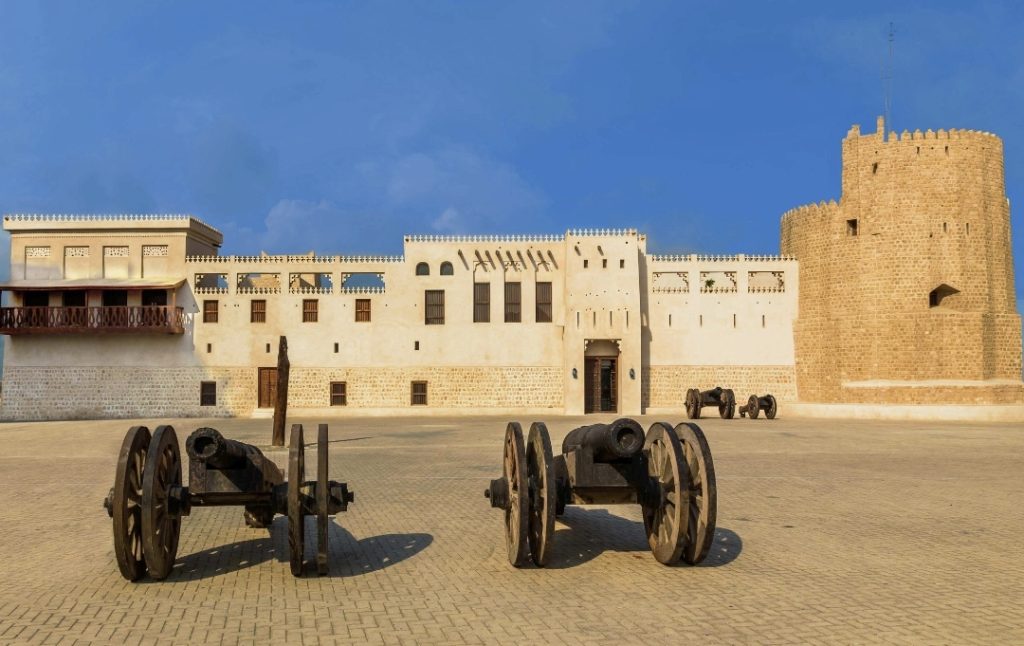Sharjah Fort celebrates 200 Years

Sharjah, The Gulf Observer: Sharjah Museums Authority (SMA) is commemorating the bicentennial of Sharjah Fort’s establishment with a series of engaging events, activities, and workshops. From August until December, visitors can experience the emirate’s rich history and culture through specialised tours, adventurous activities, and captivating theatrical performances designed for the occasion.
The activities included the 8th session of SMA’s popular “Al Hisn in Memory” programme, which took place today. This year’s session featured a panel discussion titled “The Great Historical Monument,” bringing together experts in the history of the emirate.
Marking the National Day, entry to the Fort on 1st and 2nd December will be free and various cultural and entertainment programmes will be held for all ages to reinforce national identity and patriotism and to promote a deeper understanding of Sharjah’s modern history, the ruling family, daily life in the emirate 200 years ago and the fort’s history and restoration leading to its official opening in 2015.
This historic fort, built in 1823, utilised soft light brown plaster and coral stone found plentifully in the depths of the Arabian Gulf.
Its doors were crafted from teak wood, while the ceiling, exhibiting an impressive geometric design, was constructed using palm fronds and mangrove tree columns.
Throughout its history, the fort faced many challenges, notably when H.H. Dr. Sheikh Sultan bin Muhammad Al Qasimi, Supreme Council Member and Ruler of Sharjah learned during his 1969 studies in Egypt of its impending demolition.
This urgent news prompted his swift return to Sharjah to salvage the fort’s remains, which were just a tower and two damaged walls.
Rebuilding the fort was a vision close to His Highness’s heart as he retained the primary doors of the fort, including the Fort gate, Al Sabah gate, and Al Khazna gate for 28 years before he directed its reconstruction based on historical photographs.
Once the restoration was finished, His Highness enriched the fort with collections that chronicled the history of Sharjah city.
The fort boasts two levels, a spacious central courtyard, three defensive towers named Al-Mahlousa, Al-Kabis, and Musharraf Square and a primary balcony housing the repentance wood previously used to mete out punishments.
Its ground floor comprises the arrest room which has been transformed into a resting area, the Mahloussa prison, the armoury, and the Al Hisn gallery detailing the building’s history and restoration phases.
There’s also the Madbasa Gallery where visitors can learn about the process of extracting date juice, commonly referred to as molasses, Al-Qawasim gallery that provides insights into the history of Al-Qawasim and their encounters with both regional and foreign entities.
The upper-level houses Sheikh Sultan bin Saqr II Gallery, the Al-Kabis Tower, the weapons gallery, the Sheikh’s room, Al Ghurfa (a room dedicated to meeting esteemed guests), the balcony, and the Majlis dedicated to showcasing historical documents and photographs.
The fort is home to an array of artefacts, including the main gate, the dancing cannon, the pearl magnifier, the royal bed, Marduf Al-Qawasim’s coin, letters from Somali royal beds, the 1820 treaty the Quran stand belonging to Sheikh Khalid bin Sultan Al Qasimi, the Qawasim’s flag, the occupation flag, the Naval Cannon a pocket watch, and the passport of Sheikh Sultan bin Saqr II.


